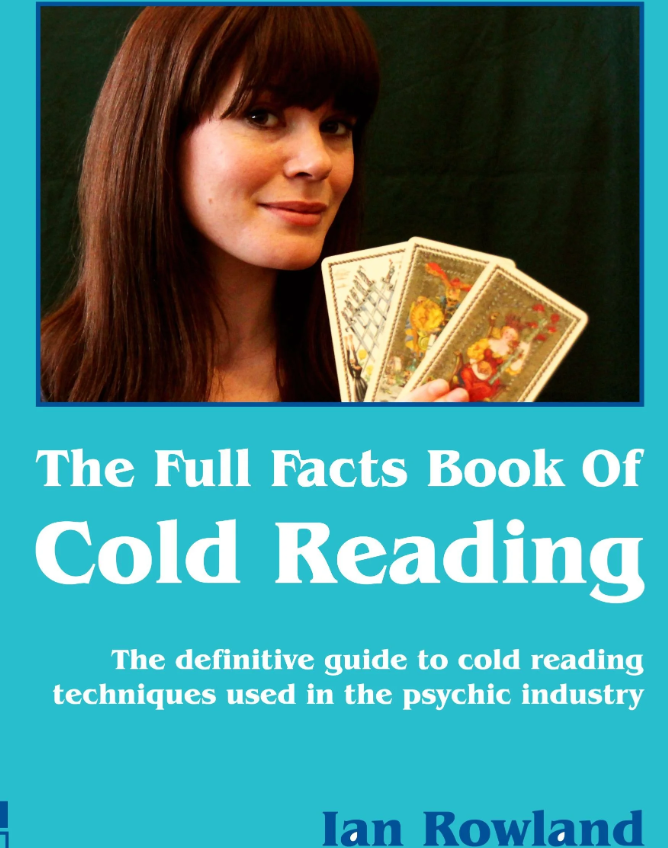The Most Common Cold Reads: A Guide to the Subtle Art of Seeming Psychic
The Most Common Cold Reads: A Guide to the Subtle Art of Seeming Psychic
Cold reading is the art of making statements to complete strangers that feel accurate, specific, and insightful, even when you have no prior knowledge about them. It is the stock-in-trade of psychics, tarot readers, astrologers, and anyone who wants to appear perceptive on demand. Over the years, certain phrases and techniques have been used so often that they have become the most common cold reads—the verbal sleight-of-hand tricks that work reliably across cultures, situations, and personalities.
In this article, we’ll walk through the most common cold reads you’re likely to hear, explain why they work, and even suggest how to spot them in everyday conversation.
1. The Barnum Statement
One of the most common cold reads is the Barnum Statement: vague, general claims that could apply to almost anyone. For example, “You sometimes doubt yourself, yet you know you’re capable of great things.” This works because people naturally focus on the part that feels true and overlook the fluff.
2. The Rainbow Ruse
Another favourite among the most common cold reads is the Rainbow Ruse, which flatters the client by attributing opposite qualities at once. For example, “You can be very sociable, but there are times when you need solitude.” It sounds like deep psychological insight, but it covers all bases.
3. The Jacques Statement
This is one of the most common cold reads aimed at life stage. For example: “When you were younger, you sometimes struggled to fit in, but you’ve grown stronger because of it.” Nearly everyone relates to feeling misunderstood in youth, so the statement lands.
4. Greener Grass
Among the most common cold reads is the “Greener Grass” ploy, which suggests dissatisfaction with the present and yearning for more. “You sometimes wonder if you’re living up to your potential.” It resonates because nearly all of us wrestle with this thought.
5. The Push Statement
A subtler member of the most common cold reads family, the Push Statement invites the sitter to provide the evidence. For example, “I sense you’ve recently had an important decision to make.” If the sitter agrees, the reader nods sagely. If not, the reader reframes it: “It may not have come to the surface yet.” Either way, the statement wins.
6. The Fuzzy Fact
This is another of the most common cold reads: something vague, but dressed as a detail. For instance: “I see a connection with the name ‘J’ or ‘G’.” The sitter will often supply the missing detail, giving the impression of a hit.
7. Sugar Lumps
Flattery is never far away in the most common cold reads. A “sugar lump” might be something like, “People don’t always appreciate your kindness, but you have a big heart.” Few people will object to being seen as generous or caring.
8. The Childhood Memory
This entry in the most common cold reads catalogue refers to something universally true yet personal-seeming. “I sense there’s something about your childhood that still matters to you today.” Of course there is—everyone has a formative memory.
9. The Jacques Twist on Career
Career-focused readings often recycle the most common cold reads: “You’ve sometimes felt under-appreciated at work, though you know you could do more if given the chance.” This works because it taps into the universal sense of being undervalued.
10. Pollyanna Pearls
Finally, the most common cold reads about the future are positive, vague predictions: “The next year holds opportunities if you stay open.” Nobody objects to a hopeful outlook, and the lack of specifics makes it unfalsifiable.
Why These Phrases Work
The reason the most common cold reads are so effective is simple psychology:
Selective memory – People remember the hits and forget the misses.
The Forer Effect – Vague statements feel uniquely personal when framed as insights.
Active participation – The client helps supply meaning, which strengthens belief in accuracy.
Spotting Cold Reads in the Wild
You don’t need to visit a psychic to encounter these patterns. Salespeople, politicians, influencers, and even job interviewers often use the most common cold reads. When you hear someone describe you in ways that feel universally true, chances are you’ve just been on the receiving end of one.
Cold reading isn’t magic. It’s communication. The most common cold reads aren’t sinister by nature—they’re just clever ways of saying things that people are ready to believe. Understanding them helps you see through the tricks, but it also helps you become a sharper communicator. After all, if words have the power to feel like insight, imagine what they can do when combined with honesty, empathy, and genuine connection.





